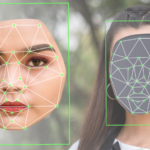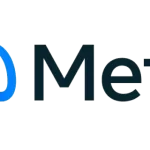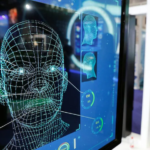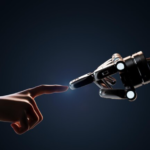An analysis and directory of Māori ICT groups and individuals designed for easy authorative reference to the myriad of Māori ICT organisations that are often created specifically for one purpose.
Introduction
The Māori ICT organisations landscape is diverse and un documented which creates confusion or misunderstandings by governments and lobby groups as to what Māori ICT groups exist, thus resulting in Internet/ICT consultations not being held with relevant Māori groups or misconceptions from non Māori perspectives being the norm. The end result for Māori is economic, social and consultation opportunities with the Internet in Aotearoa/New Zealand sometimes being ignored by decision makers.
This analysis and directory produces a reference for governments and lobby groups to identify relevant Māori ICT groups so that Māori can be better involved, fairly and more widely consulted and to provide more benefits to Māori ICT stakeholders who currently miss out on consultations and opportunities. It will also allow interested individuals to identify online professional groups they may want to participate in and provides a snap shot of the past Māori ICT organisations.
This report also briefly discuss other ICT and government advisory groups who have Māori representatives and whose clientele are predominantly Māori. It does not not cover Māori owned ICT businesses, education facilities with Māori ICT groups nor the Māori broadcasting arena and Māori departments who have Māori ICT staff.
In the first instance, public records such as companies office, web sites, media and personal communications were used. Then informal meetings with representatives were conducted and offered. This publication remains a living document and that will be updated when appropriate facts can be verified.
Another issue within the Māori ICT organisation industry is that the same person may associate with many organisations creating a false impression that one person is the authority of all things Māori ICT related, or perhaps that an individual has too much mana. Because of this, on each organisation page is a list of key people who were/are members of that organisation and then another separate page that lists individuals with their associated organisations which allows a quick reference look up based in either an individual or organisation. This provides proof that representation is fairly distributed in most areas.
There are also a number of influential Māori individuals who have made significant contributions to the Māori ICT industry. This section is a work in progress due to the difficulty of identifying appropriate individuals.
InternetNZ Funding has made this research possible.
Timeline of Māori Tech Organisations being created
| Date formed | Organisation Name | Status |
| 1992 | Te Rōpū Whakahau | Active |
| 1994 | National Association of Māori Mathematicians, Scientists And Technologists | Non-Active |
| 1997 | The New Zealand Māori Internet Society – Te Whanau Ipurangi | Non-active |
| 1999 | WAI 776 Claimants | Non-active |
| 2000 | Hautaki Limited | Active |
| 2000 | Te Huarahi Tika Trust | Active |
| 2000 | Te Huarahi Tika Trust and Hautaki Electoral College | Active |
| 2003 | Aotearoa Māori Internet Organisaiton AMIO | Non-active |
| 2003 | Society of Professional Māori Women in Information Technology – Te Waka Wahine Wā Hangarau | Non-active |
| 2005 | New Zealand Māori Internet Society | Non-active |
| 2009 | Te Kahui Manu Hokai – Māori GIS Association | Active |
| 2009 | WAI 224 Claimants | Non-active |
| 2010 | Ratana ICT Hub / Marton ICT Hub | Active |
| 2010 | Torotoro Waea Partnership | Non-active |
| 2011 | Ngā Pū Waea | Non-active |
| 2011 | Broadband Advocates for Māori | Non-active |
| 2012 | Māori Spectrum Coalition Group | Non-active |
| 2012 | Taitokerau Networks Ltd | Non-active |
| 2013 | Digital Māori Forum DMF | Active |
| 2013 | Planet Māori | Active |
| 2015 | Māori ICT fund | Active |
| 2015 | Māori ICT Network Group | Active |
| 2015 | Te Mana Raraunga/Māori Data Sovereignty | Active |
| 2016 | Iwi Chairs Forum – Data Group | Active |
Aotearoa Māori Internet Organisaiton AMIO

Aotearoa Māori Internet Organisation
Also Known As: AMIO
Entity Type: Online
Affiliations: New Zealand Maori Internet Society, The New Zealand Maori Internet Society.
Industry Sector: Internet
Web site: http://www.amio.org.nz
Date Established: 2003
Date disestablished: 2009
Membership Model: Online bulletin board membership
AMIO was created by several former executive members and kaumatua of The New Zealand Maori Internet Society: Ross Himona, Karaitiana Taiuru, Te Rangilaiwhiria Kemra, Teanau Tuiono and Bernadette Murray.
Their purpose was to fill the gap of what they believed to be a lack of Maori representation in the Internet and ICT arena. This occured at a time of political unrest within the Maori Internet community and their representatives.
AMIO was an online bulletin board web site that had a number of groups catering to the wide and ever expanding ICT landscape. Tutorials and support networks were developed on this site.
AMIO believed there was an urgent need for Maori to begin defining what the Internet is to Maori, how are and will Maori be affected, and Maori culture and identity impacted by this. To foresee and predict its long term impact on Maori society and identity.
That the migration and increased participation of Maori onto the internet and world wide web need not be limited to being mere participants only in the current structure and facilities available. Rather, it believed that the internet and World Wide Web can be fashioned and shaped to better encapsulate our culture and discourses.
AMIO recognised that Maori have a long history of resistance to the commodification of their culture and knowledge and recognised that current intellectual property laws are completely inadequate at protecting Maori culture from commercial exploitation.
AMIO believed that modes of communication and dissemination of information are inadequate to encompass and promote future dynamic growth of Maori culture, values and discourse, online.It also recognised that the majority of Maori are participators only in the internet and that in order for the internet and World Wide Web to become more supportive of Maori culture and identity, then there is a dire need for Maori internet developers who can become authors and creators of web functions and web structures more conducive to Maori modus operandi.
AMIO believed Maori had to move on from just web design and email list management to web programming, application development, communications enhancements to better suit Maori styles and values of communications.
Some achievements of AMIO included:
- Made the only submission on behalf of Maori re the 2ld survey to protect .iwi.nz and .maori.nz
- Sent a representative to a community conference to speak about Maori IP rights and at least one delegate to the “World Summit on the Information Society “Global Forum of Indigenous People and the Information Society” in Geneva
- Sent a delegate to the Communities Online conference in Wellington to discuss “Lessons learnt on the Internet for Maori organisations and IP rights.
- Approached for a second time a cyber squatter who has taken many Iwi and other sensitive Maori names
Objectives of the Aotearoa Maori Internet Organisation included:
- to promote and define a strong Maori presence and entity on the internet.
- The Aotearoa Maori Internet Organisation (AMIO) will participate and seek relationships with many national and International IT bodies and actively participate in:
(a) Government submission processes on legislation
(b) Represent Maori on government consultation processes
(c) International discussions and forums that can/do impact Maori.
(d) National submissions, surveys that concern the .nz Internet space - to work directly with Maori Internet community including individuals, Iwi and Hapü and will support any non Maori organisation that wishes to advance Maori in Information Technology.
- to promote internet service creators vs/over services users and participants.
Key people
- Ross Himona (Kaumatua)
- Te Rangikaiwhiria Kemara
- Karaitiana Taiuru
- Bernadette Murrary
- Teanau Tuiono
Broadband Advocates for Māori

Name: Broadband Advocates for Māori
Also Known As: BAM
Entity Type: Online
Industry Sector: ICT
Web site: http://maoribroadband.weebly.com/index.html
Date Established: 2011
Date disestablished: 2011
A website that was set up to provide Māori with the opportunity to consider what the RBI offers Māori, to voice their opinions and to make sure Māori can hold accountable both Government and those making the bids on their commitments post decision.
It appears as though this initiative did not make any progress or significant achievements and that nothing apart from the web site was created.
Key People
- Graeme Everton
Digital Māori Forum DMF
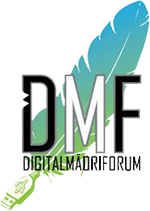
Name: Digital Maori Forum
Also Known As: DMF
Entity Type: Incorporated Society
Affiliations: Rtana ICT Hub
Industry Sector: ICT
Web site: http://www.dmf.co.nz
Date Established: 2010 (informal)-2013 (legal entity)
Membership Model: Paid membership
In 2008 a small group of Maori ICT practitioners and business owners got together to discuss Maori participation in ICT. In those discussions it was identified that there was no organisations to encourage and support Maori in or into the ICT industry.
In 2009 the group re convened and planned a national hui to gather Maori industry players to find solutions to the issues that were keeping Maori out of the industry and away from the ICT economic opportunities. In 2010 this hui occurred and from that hui, the group called itself the Digital Maori Forum with an aim to become a Maori ICT industry group that would be developing a strategy for the future that included supporting Maori in or into the ICT industry.
A strategic planning hui was held in October 2011 and a draft strategy was created to become a legal entity was discussed. In 2013 the group became an incorporated society.
The group lobbies government and industry groups for more Maori representation and Treaty obligations while it has a commercial interests in ICT projects.
Key People
- Arahi Hagger
- Col Heke
- Llanasa Peachey
- Puawai Hagger
- Rei Sciascia
- Renee Sciascia
- Potaua Biasiny-Tule
- Quinn Nahi
Hautaki Limited
Name: Hautaki Limited
Also Known As:
Entity Type: Limited company
Affiliations: Te Huarahi Tika Trust, Hautaki Trust, 2Degrees Mobile, Tūaropaki Incorporation, Wairarapa Moana Trust/Wairarapa Moana Incorporation
Industry Sector: Telecommunications
Web site: http://www.thtt.co.nz
Date Established: June 2000
Membership Model: Elected Board of Directors from Te Huarahi Tika and Māori community.
Hautaki is the commercial arm of Te Huarahi Tika Trust.
Hautaki engages in activities necessary to ensure 3G spectrum maximises opportunities for Maori in line with the objectives of the Hautaki Trust.
The charitable trust, Te Huarahi Tika Trust, formed a commercial entity known as Hautaki Trust. This trust is governed by Hautaki Limited, a company established to be the Trustee of Hautaki Trust. Te Huarahi Tika Trust is the sole shareholder of Hautaki Limited. Te Huarahi Tika Trust is also the beneficiary of the Hautaki Trust and appoints its Trustee.
The Hautaki Trust initially took a 30% shareholding in Econet Wireless (NZ) Ltd and over the next eight years worked with global interests to secure partners to fund the $150M – $300M needed to establish the service. The Trust’s representatives were also heavily involved in lobbying the government to change the regulatory environment to allow the introduction of New Zealand’s third mobile service.
Through a capital raising programme from 2005-2009, Māori shareholding (available in $1m minimum parcels) increased to 19.5% of the company. The other major new Māori shareholders are the Tūaropaki Incorporation and the Wairarapa Moana Trust/Wairarapa Moana Incorporation.
NZ Communications Ltd, previously EconetNZ, announced it would launch its cell phone venture commercially in August 2009 along with its new more commercial company name – ‘Two Degrees Mobile Ltd’. In mid-July 2009, in another significant change of stake holding, Econet Wireless (the original South African /Zimbabwean partner of eight years) announced it had sold its shareholding to Trilogy International Partners LLC, an American company already holding 27% of shares in Two Degrees. By way of the sale Trilogy took a further 25% shareholding in Two Degrees Mobile Ltd to take its shareholding to 52%. The price for the purchase was not disclosed.
Between 2010-2012 Two Degrees engaged in a significant capital raising effort ($200M) through the issuing of new shares. Hautaki agreed to an arrangement that would allow it to borrow from Trilogy in order to maintain the Māori ownership percentage. This arrangement contributed significantly to the growth of the network; another consequence was the development of a $14M obligation to Trilogy. In late 2014, Hautaki retired that debt in full through a transfer of share ownership to Trilogy.
Key Poeple
- Antony Royal
- Bill Osborne
- Brian Leighs
- Daphne Tania Luke
- Derek Wooster
- George Haig Reedy
- Karaitiana Taiuru
- Mavis Mullins
- Nachelle Griffiths
- Neville Baker
- Paul Majurey
- Steve Murray
- Taaringaroa Nicholas
- Toa Greening
Māori ICT Development Fund Expert Advisory Group
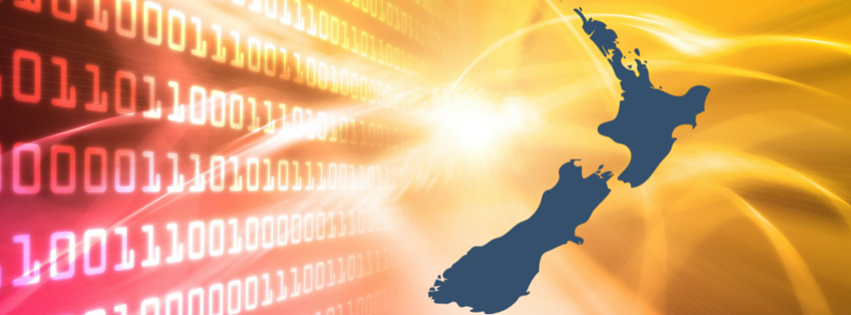
Name: Māori ICT Development Fund Expert Advisory Group
Also Known As: Maori ICT fund, The Digital Maori Fund, Māori Digital Technology Development Fund, Ka Hao.
Entity Type: Government appointed body
Affiliations: Te Puni Kokiri
Industry Sector: Government
Web site: https://www.tpk.govt.nz/en/whakamahia/skills-learning-and-education/maori-ict-development-fund/
Date Established: 2015
Membership Model: Cabinet appointment
In 2015, eight appointments were made to the Expert Advisory Group after Te Puni Kokiri asked for suitable nominations and seeking input from Maori industry experts as to what the fund should be used for. The apointments are: Antony Royal, George Reedy, Vanessa Clark, Ian Taylor, Warren Williams. Included in the group are ex-oficio members from – Te Puni Kōkiri, Ministry of Business, Innovation and Employment and Callaghan Innovation.
The advisory group provides advice about how the Fund will work; and will make recommendations to the Ministers about how the Fund should be spent. Feedback was gained from several nationwide hui that discussed potential funding priorities for the Māori ICT Development Fund.
Funding priorities
Funding priority 1 – Improving digital skills and pathways for Māori into digital technologies.
This priority will grow the number of Māori in high-value jobs by improving and promoting pathways for Māori to enter the digital technologies sector, and by supporting the development of skills necessary to participate in sectors deploying digital technologies.
Funding priority 2 – Growing digital technologies businesses.
This priority will grow the number of high-value jobs by supporting the development of Māori in digital technology businesses.
Funding priority 3 – Enhancing new Māori language and culture initiatives through digital technologies.
This priority will support the development of new Māori language and culture initiatives through digital technologies, and in doing so, contribute to the development of skills necessary to participate in sectors deploying digital technologies and grow the number of Māori in high-value jobs.
Key people
2015 appointments.
- Antony Royal
- George Reedy
- Ian Taylor
- Vanessa Clark
- Warren Williams
Ex officio.
- Di Grennell – Te Puni Kōkiri
- Georgina Whata – Callaghan Innovation
- Paul Alexander – Ministry of Business, Innovation and Employment
Iwi Chairs Forum – Data Group
![]()
Name: Iwi Chairs Forum – Data Group
Entity Type: Sub group of a group
Industry Sector: Iwi
Web site: http://www.iwichairs.maori.nz
This is a private group that is looking at Data Sovereignty issues.
Māori ICT Network Group

Name: Māori ICT Network Group
Entity Type: Facebook group
Affiliations:
Industry Sector: ICT
Web site: https://www.facebook.com/groups/MaoriGeeks/
Date Established: 2015
Membership Model: Membership by approval with several group admins
An networking Facebook group for Māori in ICT or with an interest in ICT.
The group consists of numerous individuals who primarily post notifications in addition to and some discussion topics.
There are no written rules of participation and could be likened to a marae where debate and discussions are held.
The group serves a previous void where Māori ICT professionals and others with an interest could share ideas and information in a neutral environment.
Key People
- Karaitiana Taiuru
- Nikolasa Biasiny-Tule
- Ngahuia Tahau
- Potaua Biasiny-Tule
- Quinn Oliver Nahi
- William Titii Asiata
Māori Spectrum Coalition Group
Name: Māori Spectrum Coalition Group
Entity Type: Co operative group
Affiliations: Te Pūtahi Paoho, Hautaki Limited, Te Huarahi Tika Trust, WAI2224 claimant group, Ngā Kaiwhakapūmau i te Reo, The
New
Zealand
Maori
Council, Graeme Everton for WAI776 claim.
Industry Sector: Telecommunications
Date Established: 2013
Date disestablished:unknown.
A collaborative group with the primary aim to lobby government for recognition that spectrum is a taonga and when appropriate to file a case with the Waitangi Tribunal for Māori rights and access to 4G spectrum.
Internet Society of Aoteaora
Name: Internet Society of Aoteaora
Also Known As: ISOC Aotearoa
Entity Type: Proposed ISOC Chapter that only remained in formation
Affiliations: InternetNZ, The New Zealand Maori Internet Society
Industry Sector: Internet
Web site:
Date Established: 2000
Date Established: 2000
Membership Model: Community
The group was formed in 2000 soon after ISOC New Zealand the organisation now called InternetNZ was renaming itself to avoid confusion that it was an Internet Society Chapter.
Several members of InternetNZ and The Maori Internet Society created an informal email group to look at forming a chapter. One of the goodwill offers was the the expertise from the InternetNZ members would assist with writing the .maori.nz proposal as many of them were involved with the creation of the policy and some were current or former council members at the time.
The ISOC submission was never completed and the group did nothing significant.
Key People
Jenny Shearer
Hone Philips
Karaitiana Taiuru
Ross Himona
Te Rangikaiwhiria Kemara
New Zealand Māori Internet Society

Name: New Zealand Maori Internet Society
Also Known As: NZMIS
Entity Type: Incorporated Society
Affiliations: Aotearoa Maori Internet Society
Industry Sector: Internet
Web site: http://www.nzmis.org.nz
Date Established: 2006
Date disestablished: 2008
Membership Model: online membership registration. Free to anyone.
Created by the same members of Aoteaora Maori Internet Society at a time it was perceived that The New Zealand Maori Internet Society had ceased to function and had let their Incorporated status expire.
The registration failed to use “The” in the name so created confusion in the industry.
This organisaiton assumed the online identity of The New Zealand Maori Internet Society and for the 2 years carried on operations as The New Zealand Maori Internet Society till it legally assumed the identity of The New Zealand Maori Internet Society.
Key People
- Bernadette Murray
- Karaitiana Taiuru
- Ross Himona
- Teanau Tuiono
- Te Rangikaiwhiria Kemara
Nga Pu Waea

Name: Ngā Pū Waea
Also Known As: Maori RBI Working Group
Entity Type: Government Advisory Group
Affiliations: Maori Party, National Party
Industry Sector: Broadband
Web site: https://www.tpk.govt.nz/en/whakamahia/nga-pu-waea/
Date Established: 2011
Date disestablished: 2015
Membership Model: Appointment by Minister of Maori Affairs
On May 03 2011 the then ministers of Maori Affairs (Hon Dr Pita R Sharples) and the then Minister of Information Technology (Hon Steven Joyce) agreed to the creation of a national Maori RBI working group to be called Nga Pu Waea.
A maximum of 7 members were selected by the previous Minister of Maori Affairs the Hon Dr Pita R Sharples. Skills of the group reflected key skills such as experience in Maori language and Culture, Information Technology, understanding of Maori society, commercial governance and relationship building.
Their mandate was expanded to include the governments Ultra Fast Broadband Initiative (UFB) and to work with Crown Fibre Holdings and its partners to facilitate Maori development opportunities associated with UFB.
Their overall focus was to enhance communications, social, health and economic opportunities with rural marae and hapu via the use of UFB and broadband technology. To work with stakeholders, to liase with and provide , communities, Maori groups and to provide advice to the Ministers.
Achievements
- Creation of an internal mapping tool showing RBI and UFB coverage data, Maori immersion schools, marae and Maori population.
- A report on the feasibility and design study on improving connectivity in Ohakune, Raetihi.
- Template/principal approach for improving remote communications.
- Legal analysis of RBI contracts
- Situation analysis and economic report to assist in identifying investment opportunities
- Six case studies on real impacts and benefits gained from access to broadband and Ultra Fast broadband.
- Discussion paper “Wired Marae Project”.
The group received a lot of criticism from the Māori ICT community and some in the telco industry for their clandestine nature, selection of marae in need of broadband, lack of partnetships and secretive appointment process which had many in the industry claiming nepotism. Some Māori on rural marae that required broadband access were also unhappy they were ignored.
The group had a Facebook page that had a private membership and no web site until recently when Te Puni Kōkiri created the pages for the group.
The resignations of Daphne Luke and Mavis Mullens who could no longer support the government of the day ignoring Māori rights to spectrum made a signifiant impact on the Māori ICT community.
Key People
- Antony Royal
- Daphne Luke
- Haami Piripi
- Hinurewa Te Hau
- Jeremy Gardiner
- Mavis Mullins
- Rhonda Kite
- Richard Orzecki
- Robyn Kamira
Planet Māori

Name: Planet Maori
Also Known As:
Entity Type: Trust
Affiliations: Sector wide
Industry Sector: ICT, Telecominications
Web site: http://www.planetmaori.com
Date Established: 2013
Membership Model: Private
Strategy
1. Provide Strategic Leadership
2. Articulate Matakite / Vision and Values
3. Articulate the contribution to Māori and NZ society
4. Defend & extend the reputation of the Sector & Organisation
5. Consolidate communications / Share Sector & Organisation resources
Goals to be reached by 2020 are:
- Sustainable economic wealth and improved economic wellbeing.
- Billion dollar contribution to NZ GDP
- To grow a sustainable and generative asset base for the Sector
- Billion in Value Assets
- Data and Technology Centres
- Opportunities and Indicators for Maorifor Science, Innovation, and Technology Funding and Resourcing
- To build a strong and sustainable Sector with 20,000 Māori Working in the Sector adn 200 Māori Businesses supported
within the Sector with Telco / Tier 1 Products, 1000s Products and Services - Māori Technology and Innovation Sector recognised as Global Leader
- Significant economic growth of Sector / Organisation
- Improved economic wellbeing for Māori (whānau, hapu, iwi, organisations)
- Benefits for New Zealand economy and communities
Sector Strategy / Organisational Support
- Achieve a global brand / international reach and scale
- Increase the Māori economy
- Improve Māori economic wellbeing / Ensure benefits are tangible
- Improve educational, social, cultural and environmental outcomes for Māori
- Provide Strategic Intelligence from Local to Global
- Build evaluative and learning culture to ensure success
- Co-develop meaningful measures (process and outcomes)
- Build excellent systems and support structures
- Tactical Opportunities
The group was perhaps the first and only independent Maori ICT group to date that managed to seek representatives from across the Maori ICT landscape to become involved and to work in co-operation together. The wide co-operation was to be short lived with some individual representatives no longer wanting to be a part of the organisation and preferring to concentrate on their own organisations.
Key People
- Karaitiana Taiuru
- Tania Wolfgramm
- Te Aroha Morehu
- Quinn Nahi
- Warren Williams
- Wikuki Kingi
Ratana ICT Hub / Marton ICT Hub

Name: Marton ICT Hub
Also Known As: Marton and Surrounds ICT Hub Charitable Trust Board
Entity Type: Trust
Affiliations: Marton ICT Hub, 2020 Communications Trust
Industry Sector: ICT
Web site: http://www.icthub.org.nz/
Date Established: 2010
Membership Model:
The Marton ICT Hub is the primary group with a subsidiary hub called the Ratana ICT Hub.
Their collective aims are to to address ‘digital disadvantage’ by providing affordable and accessible services for adults and students without access to a computer or broadband internet at home, people who what to buy or do not have the skills to use their computer or the internet.
Their target audience are people who are rural and isolated, young, older, low income, Maori or Pacifica.
The Ratana Hub is located in the old Post Office next to the Marae in Ratana. In its role as a community computer
hub, the Ratana Hub is storing, preserving and disseminating information through:
- Local radio station—Radio Morehu 88FM
- Recording Studio
- Graphic Designs Software
- Green Room > video and still cameras
- Smart TV
- Community movie theatre
- Archival digital content (1918-1940)
The Ratana ICT Hub are closely aligned with the Digital Māori Forum and often work in colaboration for public lobying and hui.
Key People
- Arahi Hager
- Puawai Hager
Society of Professional Māori Women in Information Technology – Te Waka Wahine Wā Hangarau
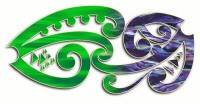
Name: Te Waka Wahine Wa-Hangarau
Also Known As: TWWWH
Industry Sector: ICT
Web site: http://www.twww.org.nz
Date Established: 2003
Date closed: 2008
Te Waka Wahine Wa-Hangarau (TWWW) the Society for professional Maori women in information technology, was established in 2001. TWWW endeavored to provide an environment where wahine Maori can interface effectively to provide support both culturally and as IT professionals.
Wahine Maori are less likely to enter information technology fields than other groups in Aotearoa say TWWW members. This is a critical issue as we seek to improve conditions for our whanau, our people and ourselves. This is encompassed by the vision of Te Waka Wahine Wa-Hangarau. The central kaupapa of TWWW is to create an environment where wahine Maori can affect their potential as professionals in information technology.
Information technology fields supported by TWWW include information systems analysis and design, implementation and programming, IT networks, IT projects management, information systems administration, IT development, broadcasting, the IT multimedia industry and more.
TWWW from time to time has offered support to whanau, hapu, iwi or other groups with their IT projects. At the national level, the group has offered its views and advice on government information technology projects and strategies. Some members have worked as consultants in IT projects while others are academics, sharing their knowledge with upcoming IT students. Internationally, TWWW members have been involved in Indigenous Peoples activities.
TWWW’s objectives:
- To empower wahine Maori to act professionally and effectively within their roles as IT professionals.
- To promote, protect and support the development of matauranga Maori, tikanga Maori and kaupapa Maori.
- To proactively participate in organisations governing IT decisions regarding Maori information.
- To encourage Maori professional development in IT.
- To develop effective external relationships with Maori organisations and groups with an interest in IT.
- To expand into the International arena of IT for indigenous peoples.
- To develop and promote te reo me ona tikanga models when developing information systems.
- To consult with iwi in an attempt to meet iwi needs in terms of IT.
- To support, promote and facilitate resource development in the area of IT.
- To develop and encourage the support of the IT industry for Maori.
- To provide support for Maori women currently working in the field of IT.
- To participate in research that is going to benefit Maori in IT
- To develop and participate in liaison with similar IT bodies nationally and internationally.
- To promote and support any member establishing and carrying out mentoring roles.
- To identify other potential Maori IT groups.
TWWW’s general objectives:
- To ensure the safety of whanau is paramount.
- To promote and encourage Maori cultural integrity.
- To identify other potential Maori women in IT.
- To promote privacy and other ethical issues for members and Maori information.
- To establish and maintain a database of members.
- To organise conferences for members as a forum for the discussion of current strategies and the development of further strategies.
- To promote and support members when applying for funding.
- To encourage all members to communicate any issues, problems, concerns about whanau, work, studies, and so on.
Key People
- Janette Hamilton-Pearce
- Robyn Kamira
Te Huarahi Tika Trust
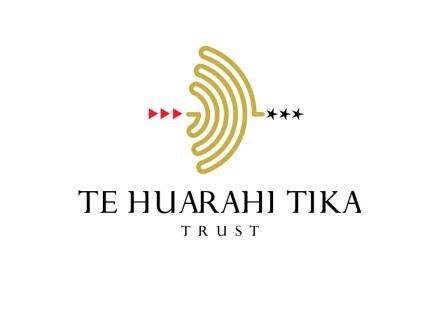
Name: Te Huarahi Tika Trust
Also Known As: THTT
Entity Type: Trust
Affiliations: Hautaki Limited, Hautaki Trust, 2Degrees Mobile, Tūaropaki Incorporation, Wairarapa Moana Trust/Wairarapa Moana Incorporation
Industry Sector: Telecommunications
Web site: http://www.thtt.co.nz
Date Established: 2000
Membership Model: Elected by an electoral college
Te Huarahi Tika Trust administers an award of a part interest in radio spectrum (in particular 3Ghz cellphone frequencies to Maori). While rejecting the Waitangi Tribunal’s 1999 finding that the radio frequency spectrum is a taonga, the Crown gave Māori a limited paper right to ‘choose its development partner’ and a parcel of cash ($5m). This cash was to be used to enter into a commercial relationship with a partner to develop the spectrum right and create a new Trust structure– Te Huarahi Tika Trust (Charitable Trust), its commercial arms and Electoral College are the fruits of those arrangements.
Vision and Values
The vision for Te Huarahi Tika Trust is to maximise our contribution to the survival of Māori as a people through telecommunications and ICT activities. Te Huarahi Tika has adopted ten kaupapa tuku iho that guide all planning and decision making.
Objects
Te Huarahi Tika established Hautaki Limited, the trustee of the Te Huarahi Tika Trust’s commercial arm, Hautaki Trust. The commercial objectives of the Hautaki Trust are to meet and fund the purposes of the Te Huarahi Tika Trust.
The trust seeks to increase the participation of Māori in the knowledge economy, in particular, the information and telecommunications sectors in New Zealand. The trust deed identifies a range of tikanga to assist in this objective including:
promotion of education and training programmes that support Māori particularly in the fields of information and telecommunications technology; funding skills development in the information, telecommunications and technology sectors
fostering and promoting research and development into information and telecommunications technology
establishing scholarships and making grants to Māori communities to give access telecommunications technology, particularly where those communities may be remote or economically disadvantaged promoting and facilitating access to business mentors, conferences, presentations and other learning experiences.
Key people
- Antony Royal
- Bill Osborne
- Brian Leighs
- Daphen Luke
- Derek Wooster
- Dr Mereana Selby
- Eric Hertz
- Gabrielle Huria
- George Reedy
- Haydn Edmonds
- Hemi Toia
- Jacqui Te Kani
- Karaitiana Taiuru
- Mavis Mullens
- Neville Baker
- Paul Majurey
- Riria (Missy) Te Kanawa
- Rob Macleod
- Sir Archie Taiaroa
- Sir Graham Lattimer
- Sir Paul Reeves
- Sir Wira Gardiner
- Steve Murray
- Strive Masiyiwa
- Tainui Stephens
- Tex Edwards
- Tina Wehipeihana Wilson
- Toa Greening
Taitokerau Fibre Networks Ltd
Name: Taitokerau Networks Limited Partnership
Also Known As:
Entity Type: Iwi owned company
Affiliations: Te Rūnanga o Whaingaroa, Te Rūnanga o Ngāti Whātua and Te Rūnanga o Te Rarawa , Datalight Limited
Industry Sector: Telecommunications
Date Established: 2011
Date Disestablished: 2016
Membership Model: Commercial partnerships
An Iwi based commercial project in partnership Datalight Ltd, Axin Ltd and Chinese State-owned China Telecom. The goal was to lay a $8.5 million, 200km fibre optic cable between Auckland and Whangarei to achieve tribal commitments to economic, social and environmental development and as an investment to achieve returns for the iwi and its investors.
The project was the first Iwi owned long-haul network in the country.
Further cable was laid connecting the Bay of Islands, Kaeo, Kaitaia, Hokianga, Dargaville, Awanui and Waitiki Landing, and an eastern route returning from Whangarei to Auckland to form a total network running more than 700km.
Key People
- Haami Piripi
- For others refer to companies office.
Te Huarahi Tika Trust and Hautaki Electoral College
Name: Te Huarahi Tika Trust and Hautaki Electoral College
Entity Type: Governance
Affiliations: Māori Congress; NZ Māori Council; Te Kōhanga Reo National Trust; Te Tauihu o Ngā Wānanga; Te Rūnanga o Ngā Kura Kaupapa Māori, NZ Māori Women’s Welfare League, Te Tauihu o Ngā Wānanga
Industry Sector: Telecomunications
Web site: http://www.thtt.co.nz
Date Established: 2000
The Electoral College was created by virtue of the Te Huarahi Tika Trust Deed. Its task is to appoint Trustees to Te Huarahi Tika Trust, between seven and fourteen in number, in accordance with the terms of the Trust Deed.
It takes advice from the Chairperson of Te Huarahi Tika Trust and their lawyers; but also sees itself as an independent supervisory body of national Māori organisations, which must respect the rights of all Māori in this block of electronic spectrum, and the claimants, and act as kaitiaki of their rights to development.
The College attends occasional joint hui with the trustees of Te Huarahi Tika Trust, for example their AGM, and has briefed the claimant groups fully on developments.
Members of the Electoral College are the New Zealand Māori Congress; NZ Māori Council; Te Kōhanga Reo National Trust; Te Tauihu o Ngā Wānanga; Te Rūnanga o Ngā Kura Kaupapa Māori, and the NZ Māori Women’s Welfare League.
Te Mana Raraunga/Māori Data Sovereignty

Name: Te Mana Raraunga
Also Known As: Maori Data Sovereignty Network
Industry Sector: Academic, Data
Web site: http://www.tmr.maori.nz/
Date Established: 2015
Membership Model: Open membership
A group who is concerned with Indigenous (in particular Maori) Data and the inherent rights that Māori have by virtue of thier inalienable relationships with the land, water and the natural world.
The group beleives that data needs and advocacy challenges concerning the measurement of social, cultural, economic and environmental outcomes for iwi and Māori.
Maori Data includes but is not limited to:
- Data from organisations and businesses
- Data about Māori that is used to describe or compare Māori collectives
- Data about Te Ao Māori that emerges from research
- Māori data is subject to the rights articulated in the Treaty of Waitangi and the UN’s Declaration on the rights of Indigenous Peoples, to which Aotearoa New Zealand is a signatory.
- Data Sovereignty typically refers to the understanding that data is subject to the laws of the nation within which it is stored.Indigenous
- Data Sovereignty perceives data as subject to the laws of the nation from which it is collected.
- Māori Data Sovereignty recognises that Māori data should be subject to Māori governance.
- Māori Data Sovereignty supports tribal sovereignty and the realisation of Maori and Iwi aspirations.
Key People
- Andrew Sporle
- David Jansen
- James Hudson
- Kirikowhai Mikaere
- Maui Hudson
- Tahu Kukutai
Te Rōpū Whakahau

Name: Te Rōpū Whakahau
Also Known As:
Entity Type: Not For Profit unregistered organisation.
Affiliations: LIANZA, National Library of New Zealand, National Library of New Zealand, Association of Public Library Managers, International Federation of Library Associations and Institutions , The Open Polytechnic of New Zealand, Te Wānanga o Raukawa
Industry Sector: Culture, knowledge, information, communication and systems technology
Web site: https://www.trw.org.nz
Date Established: 1992
Membership Model: Paid membership. Open to to any person, group or institution with an interest in ngā taonga i tuku iho, culture, knowledge, information, communication and systems technology work.
Te Rōpū Whakahau is the leading national body that represents Māori engaged in Culture, Knowledge, Information, Communication and Systems Technology in Aotearoa New Zealand.
It is a Māori association guided by the whakatauki “waiho i te toipoto, kaua i te toiroa” and is founded on four core values: Whanaungatanga, Manaakitanga, Kaitiakitanga and Te Reo Māori. The group supports practitioners and their organisations to empower whānau, hapū and iwi by providing development opportunities, indigenous and multicultural partnerships, and championing best practice around services, cultural responsiveness and accountability within the profession.
This group has recognised the growing relationship between the library adn information communications technology industries and has begun to adapt to the more tecnical aspects of the nature of librarianship by adding ICT to thier objectives.
Key People
- Anahera Morehu
- Ani Pahuru-Huriwai
- Ann Reweti
- Ariana Tikao
- Bernard Makoare
- Carla Jeffrey
- Cellia Joe-Olsen
- Chris Szekely
- David Kukutai Jones
- Donald Gregory
- Eddie Neha
- Glenn Taitoko
- Haki Tahana
- Haki Tahana
- Haneta Pierce
- Hinureina Mangan
- Jeanette Wikaira
- Manuhiri Huatahi
- Peter Hunter
- Raewynne Evans
- Spencer Lilley
- Te Okeroa (Jock) Walker
- Te Paea Paringatai
The New Zealand Māori Internet Society – Te Whanau Ipurangi

Name: The New Zealand Māori Internet Society
Also Known As: NZMIS, Te Whanau Ipurangi
Entity Type: Incorporated Society
Affiliations: AMIO, New Zealand Maori Internet Soceity
Industry Sector: Internet
Web site: http://www.nzmis.org.nz
Date Established: 1997
Membership Model: Open to anyone.
Originally established to represent online Māori due to perceived discrimination at the time (see history below) NZMIS lobbied for the worlds first open Indigenous 2nd Level domain .maori.nz which is now a popular choice in domain names.
At its peak, the membership was nearly 2000 members.
The organisation was a lobby group lobbying InternetNZ, Domain Name Commissioner and government for representative changes. It also assumed the moderation role of the domain .iwi.nz when it faced the ultimatum of being removed from the DNS.
History
Ross Himona was the founder of NZMIS and appointed Kaumatua of the Society and an honorary life time member in 2000.
Below is an essay written by Ross Himona.
In 1995 I first ventured into Cyberspace. That’s not long ago, but in Internet time it was quite early in the development of public access Internet in Aotearoa New Zealand. It was for instance well before the advent of Xtra and Clear and Ihug. At the time there were no New Zealand based Internet Service Providers with nationwide coverage, and I joined the US service, Compuserve, to be able to connect from the main centers in this country. The first thing I did was look for Māori on the Net, and for Māori content on the World Wide Web. There were very few Māori, and there were virtually no authentic Māori websites. What I did find in online forums, in newsgroups, and in websites, was that Pākehā were presuming to present a Māori perspective to the world on our behalf.
Quite perturbed, I decided to build my first website, which is still there, called “From Hawaiki to Hawaiki”. In this website I set out to present clearly and unmistakably a Māori view of Māori, and to seize the initiative back from those who were presuming to tell our stories. I also became quite aggressively involved in various online forums and newsgroups in order to make the point about Māori ownership of matters Māori.
Not long after, Kamera Raharaha (Te Aupouri) from Auckland also published her first website called Māori Organisations of New Zealand. We sought each other out, and worked together to develop what we saw as an authentic Māori presence on the Internet. These two websites became the pioneer Māori sites on the Web, and became models for many Māori who have since ventured into cyberspace as e-publishers.
We soon became aware that the Internet in Aotearoa New Zealand was controlled by a small group of Pākehā, mostly linked to the universities, Waikato and Victoria in particular. It was the universities that had brought the Internet to the country. We thought that Māori ought to stake a claim to the Internet in Aotearoa.
We realised also the enormous potential of the medium for Māori to present our stories and our perspective to the world. From the moment we published our websites we were both inundated with visitors from all over the globe, wanting to know more about Māori and Māori culture. The medium is available to all, affordable, and is a global medium.
In 1997 the Internet Society of New Zealand (ISOCNZ) asked for submissions on second-level domain names. The names available were <co.nz>, <org.nz>, <gen.nz>, <net.nz>, <ac.nz>, <school.nz>, <cri.nz>, <govt.nz>, <mil.nz>, and <iwi.nz>.
The <iwi.nz> domain name was only available to a very limited number of organisations, and only on application to a moderator. I thought at the time that Māori needed a generic domain name, and one that makes a bold statement about the place of the tangata whenua in the affairs of Aotearoa New Zealand. From our experience on the Web, Kamera and I knew that there was enormous interest in Māori, and in fact the Māori websites were the ones that made Aotearoa New Zealand unique in the world.
Kamera and I were also acutely aware that Pākehā had pounced on some of our Māori domain names. <maori.co.nz> had been registered by a Pākehā in Southland before we could do it ourselves. Kamera managed to get <maori.org.nz>, and I registered <maori.net.nz> and <maori.gen.nz>.
The USA domain names <maori.com> and <maori.net> had also been taken by non-Māori. They were registering them for commercial purposes without a thought for the rights of the tangata whenua to their own names.
I was doing a technology contract at Te Kōhanga Reo National Trust at the time (in 1997) and applied to ISOCNZ for a new second-level domain <maori.nz>. The application was quite well supported given that it was submitted at very short notice. However, as this was a public process I then received what was my first avalanche of anti-Māori email. There were many more to come over the following years, for a variety of different online campaigns. I also received some very disparaging comments from a couple of members of ISOCNZ.
In the event ISOCNZ decided against allowing any more second-level domain names.
Kamera Raharaha and I then decided to form the Māori Internet Society with the long-term aim of wresting control of part of the Internet for Māori – Māori control of things Māori. We solicited membership and gained about ten members. However as we were both heavily involved in developing our own online presence on the Net, we did not actively promote the society at that time, but agreed that we would wait until more Māori became involved on the Internet.
The Society needs active involvement by a core group of people who are prepared to become involved in the administration and the politics of Internet management in Aotearoa New Zealand. It also needs active support from a broad base of Māori internet users.
I maintained a Māori Internet Society page in my website, and from time to time received a few requests for information.
Early in 2000, after the interest seemed to increase somewhat, I decided to re-launch it via an egroups.com email list. There was immediate interest from a small group of Internet activists who thought that the Society should be incorporated, and who indicated that they were willing to play an active role. As Founder, I then appointed an interim executive to incorporate the Society and hold elections. The Chairman of that interim executive, Karaitiana Taiuru, has done an excellent job, and with his committee, is well on the way to converting our informal society into a vibrant and effective representative group for Māori on the Internet.
Key People
- Adrianne Paranihi
- Andrea Malcolm
- Bernadette Murray
- Colin Heke
- Erana Wineti
- Godfrey H. Pohatu
- Hauiti Hakopa
- Hone Phillips
- Ivor Jones
- Kamera Rahara
- Karaitiana Taiuru
- Kupe Waa
- Leon Symes
- Leona Karauria
- Michael Ross
- Paula Collins
- Pikiora Wylie
- Richard Orzecki
- Riki Robinson
- Ross Himona
- Tame Iti
- Te Rangikaiwhiria Kemara
- Teanau Tuiono
- Tiopira Hape
- Tony Murray
- Tumohe Clarke
- Vance Walker
Torotoro Waea Partnership
Name: Torotoro Waea Partnership
Also Known As:
Entity Type: Commercial
Affiliations: Smartlinx3
Industry Sector: Telecommunications
Date Established: 2004
Membership Model: Commercial Partnerships
Torotoro Waea is/was a Limited Partnership, 100% owned by Māori which was formed to better improve outcomes Maori communities through the provision of significantly improved telecommunications infrastructure.
The commercial alliance that included 24 members, including various iwi, and industry partners made an unsuccessful bid for the government’s 700MHz spectrum. They were one of 3 shortlisted bidders.
In their own words, their bid was as an expression of kaitiakitanga by the tangata whenua and that it is not about the revenues to be gained from the rural sector it is all about providing cost effective communication roadways into rural communities to provide the connectedness and opportunity for communities to improve education and health, create sustainable jobs, and stimulate innovation and economic development. As well as providing for the connectivity of rural schools, health providers and rural communities; up to 1000 marae are planned to be connected during this rollout.
They also presented a submission on the Telecommunications (TSO, Broadband, and Other Matters) Amendment in 2011.
Key People
- Antony Royal
- Whatarangi Winiata
- Others. Refer to the Companies Office.
National Association of Māori Mathematicians Scientists and Technologists – NAMMSAT
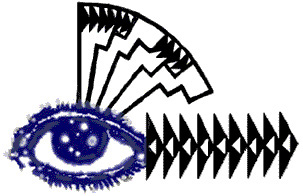
Name: National Association of Māori Mathematicians, Scientists And Technologists
Also Known As: NAMMSAT
Entity Type: Online
Web site: http://www.nammsat.org.nz
Date Established: 1994
Date disestablished: 2009
Membership Model: Incorporated Society
A collective group of Māori practitioners who supported the increased participation and achievement by Māori in the fields of mathematics, science, engineering and technology. NAMMSAT aimed to facilitate the participation and achievement of Māori in the educational and commercial sectors, and in Research, Science and Technology (RS&T).
Whakatauki
The whakatauki “Mākoi Pounamu, Tini Putanga kē” was given to NAMMSAT in 1994 by Prof Wharehuia Milroy (Māori Studies, Waikato University) when it ran the first Science Camp. The whakatauki refers to
the greenstone tip of a spear which is simple in shape and form, but takes time to fashion and is very precious. Although a seemingly simple object, from it comes many different outcomes. This refers to the scientific bodies of knowledge, the simplicity and complexity and the many outcomes that can be gained from this knowledge.
Strategies:
NAMMSAT used the following strategies to support its aims.
- To establish and maintain a database of members;
- To organise conferences for members as a forum for the discussion of current strategies and the
development of further strategies; - To promote the sciences in all areas of education and training;
- To promote the sciences in primary and secondary schools;
- To target Māori students in recruitment for tertiary study in the sciences;
- To provide links between industry and Māori students;
- To assess and develop support for Māori students in the sciences at tertiary level;
- To encourage the professional development of Māori teachers of science;
- To promote and provide support for Māori in applying for mathematics, science and technology
scholarships, fellowships and contracts; - To support, promote and facilitate resource development in the area of the sciences;
- To have a role in monitoring curriculum development;
- To promote and support the development of the Māori body of knowledge of the sciences;
- To develop and encourage the support of the science industry for Māori;
- To provide support for Māori currently working in the fields of science, mathematics and
technology; - To participate in research that is going to benefit Mäori in terms of achieving the main objective of
the association; - To publish a quarterly newsletter for members;
- To provide an avenue for the publication of members academic work;
- To develop and promote models to encourage parental support of students participating in the
sciences; - To expand into the international arena of education for indigenous peoples;
- To consult with iwi in an attempt to meet iwi needs in terms of the sciences;
- To develop and participate in liaison with similar bodies nationally and internationally.
NAMMSAT achievements
- Three successful national conferences;
– The first in Auckland in 1995;
– The second in the Waikato in 1996;
– Third conference in Palmerston North in 1997. - National Networks – Through NAMMSAT’s conferences and working parties to bring together
Mäori people from all walks of life and from a large range of RS&T fields. It has an established
network of Mäori science practitioners and a national forum for all Mäori interested in both
western science and mātauranga Māori; - Publications;
– Proceedings of Inaugural NAMMSAT conference in 1995;
– Māori into Science, Maths, and Technology; - Science Camps – NAMMSAT held for Form 2 Kura Kaupapa Māori Students (35) at Waikato
University in 1994, and as a result of this success, the Ministry of Education funded a further 2
science camps in 1997; - Leadership Courses – In 1997 NAMMSAT ran a “Leadership in the Sciences” Wānanga for senior
Māori science students; - Database – NAMMSAT has developed and maintains a national database of Māori involved in
Maths, Science and Technology; - International Connections – NAMMSAT has developed and is continuing to maintain strong links
with overseas indigenous groups with a similar kaupapa. For example, AISES in the United
States, the American Indian Science and Engineering Society; - Curriculum Development – NAMMSAT members assisted in developing the ‘Hangarau
(Technology) Curriculum’ in te reo Māori.
Objectives:
- To organise and promote NAMMSAT as the premier national organisation representing the
professional viewpoint of Mäori practitioners in RS&T. - Develop and promote NAMMSAT as an organisation of educational excellence for Mäori in western
science and mätauranga Mäori. - Identify Mäori in RS&T and other kindred professional groups.
- Continue to develop strong relationships with iwi, hapü, and Mäori organisations
- Develop a database and a network that clearly defines a needs analysis
- Establish a policy production process within the NAMMSAT membership
- Organise membership to a proficient level for inclusion on various RS&T boards and committees.
Key People
It is difficult to differentiate the backgrounds of the people involved as this group was the only multi discilinary ICT related Māori group.
- Bevan Tipene-Matua
- Charlotte Severne
- Garth Harmsworth
- Joana Johnston
- Joe Rickit
- John Kape
- Mark Laws
- Meto Leach
- Murray Parsons
- Pauline Waiti
- Rauru Kirikiri
- Te Herekiekie Herewini
- Te Rawhina McDowell
Te Kahui Manu Hokai – Māori GIS Association

Name: Te Kahui Manu Hokai
Also Known As: Maori GIS Association, TKMH
Entity Type: Non-profit organisation
Industry Sector: GIS
Web site: http://www.tekahuimanuhokai.org.nz/
Date Established: 2009
Te Kahui Manu Hokai is incorporated as a non-profit organisation comprised of Maori GIS practitioners and users based in Aotearoa. The inaugural meeting of the association was held at Wairoa Marae, Ngāti Kahu in Tauranga on 7 December 2010. The name of the organisation reflects how GIS can act as a bird that soars through the skies accumulating spatial references and knowledge.
TKMH was been set up to promote the use of Geospatial Information Systems (GIS) and associated information technologies for the benefit and advancement of iwi Maori in Aotearoa. TKMH aims to provide a centralised role for the sharing of technical expertise, support and generally increasing awareness of Geo-spatial technologies and functions.
The organisation also expects to advocate for and improve Maori participation in the Geospatial Industry at all levels. TKMH hopes to identify opportunities for whanau, hapu and iwi to gain experience or contracts with local and central government authorities or organisations, for the provision or development of activities or resources that are useful for our members.
Key People
- Bernadette Papa
- Dennis Peters
- Des Heke
- Des Kahotea
- Duane Wilkins
- Gina Mohi
- Huia Pacey
- Jon Procter
- Makere Rika-Heke
- Moka Apiti
- Rikihana Hancock
- Roland Pomana
- Takerei Norton
- Te Rangikauhoe Heke
- Tony Elson
- Waitangi Wood
WAI 2224 Claimants
Name: WAI 2224 Claimants
Also Known As:
Entity Type: Collaborative group
Affiliations: The
New
Zealand
Maori
Council, Nga
Kaiwhakapumau I
te
Reo
Inc, Graeme
Everton
for
and
on
behalf
of
the
Wai
776
(1999)
claimants
Industry Sector: Telecommunications
Date Established: 2009
A group involved that was in discussions with the Minister of Maori Affairs and ICT Minister after being disillusioned with Te Huarahi Tika Trust and Hautaki Trust who in the opinion of the group, where too focused on ensuring 2degrees continues to grow while ignoring pan Maori interests.
The Wai 2224 claimants sought a sizable portion of the 700MHz spectrum and an agreement with the Crown that would ensure a similar allocation every time spectrum rights become available.
A copy of their submission To The Finance And Expenditure Select Committee here.
Key People
- Graeme Everton
- Huirangi Waikerepuru
- Whatarangi Winiata
WAI 776 Claimants
Name: WAI 776 Claimants
Entity Type: Collaborative Group
Affiliations: Te Pūtahi Paoho, Hautaki Limited, Te Huarahi Tika Trust, WAI2224 claimant group, Ngā Kaiwhakapūmau i te Reo, The
New
Zealand
Maori
Council
Industry Sector: Spectrum
Date Established: 1999
Early claims by the New Zealand Maori Council and Nga Kaiwhakapumau i Te Reo in 1990/91 had sought access to FM for Maori radio development before the Waitangi Tribunal. The Tribunal unanimously agreed in its Wai 150 report that, in relation to the auction of FM radio frequencies, iwi had a ‘prior interest’ in radio spectrum.
In 1999 Rangiaho Everton took a claim to the Waitangi Tribunal on behalf of Māori arguing that the Crown did not have right to create property rights around spectrum and should not assume ownership.
The Waitangi Tribunal agreed in a majority decision that Māori had fair and equitable access to the spectrum.
This ‘prior interest’ was advanced again by Whatarangi Winiata, Graeme Everton, and the late Rangiaho Everton, when the Government continued with the sale of valuable spectrum later in the 1990s. One particular kind of spectrum was the cellphone fixed-point mobile band in the 2-gigahertz band (known by the modern acronym 3G (for 3rd generation)). Its sale led to a further claim by Rangiaho Everton, which succeeded at an interim, and later, a full Waitangi Tribunal hearing in 1999. The Crown noted these reports, but rejected the idea that Maori had an Article 2 interest in the radio spectrum. The Trust was born out of this Crown maneuver to outflank Tribunal recommendations in relation to its spectrum auctions.
While rejecting the reports from the Waitangi Tribunal, the Crown unilaterally decided in 1999 to create:
- a reservation of a ‘joint development right’ over one quarter of the 3G spectrum for sale, whereby Maori would have to enter into a viable contract with a commercial partner for use of that spectrum; and
- a charitable trust, known as the Māori Spectrum Trust, to represent Maori interests and receive $5m by way of a grant from the Crown.
Reports:
The Radio Spectrum Management and Development Interim Report, (Wellington: Legislation Direct, 1999), 18pp Wai 776
The Radio Spectrum Management and Development Report, (Wellington: Legislation Direct, 1999), 100pp Wai 776
Key People:
- Graeme Everton
- Rangiaho Everton
- Whatarangi Winiata


